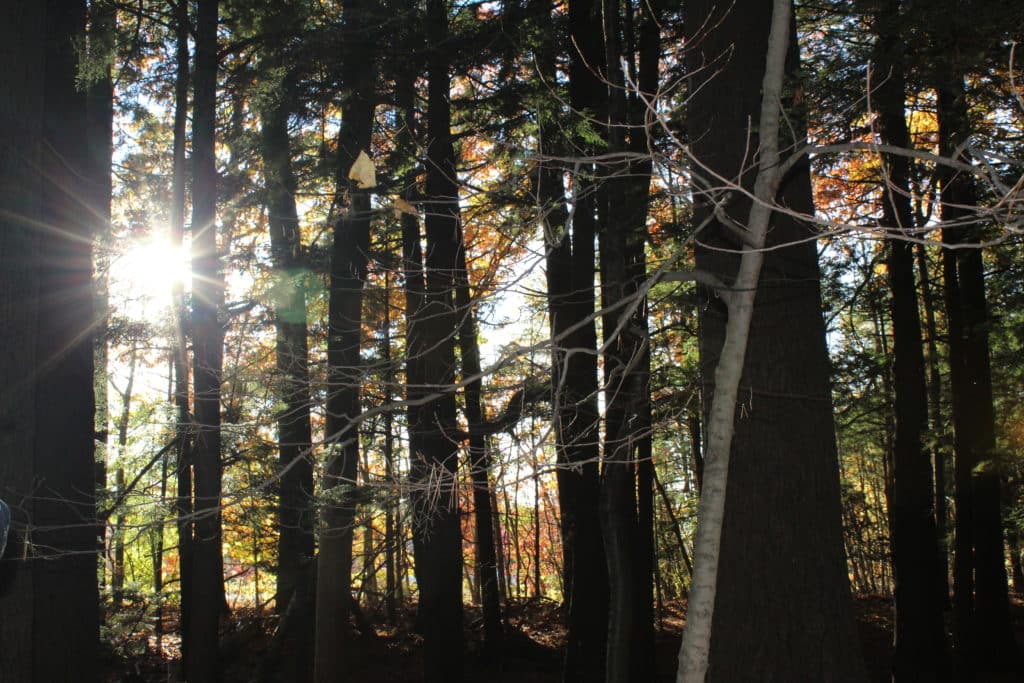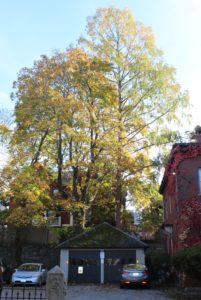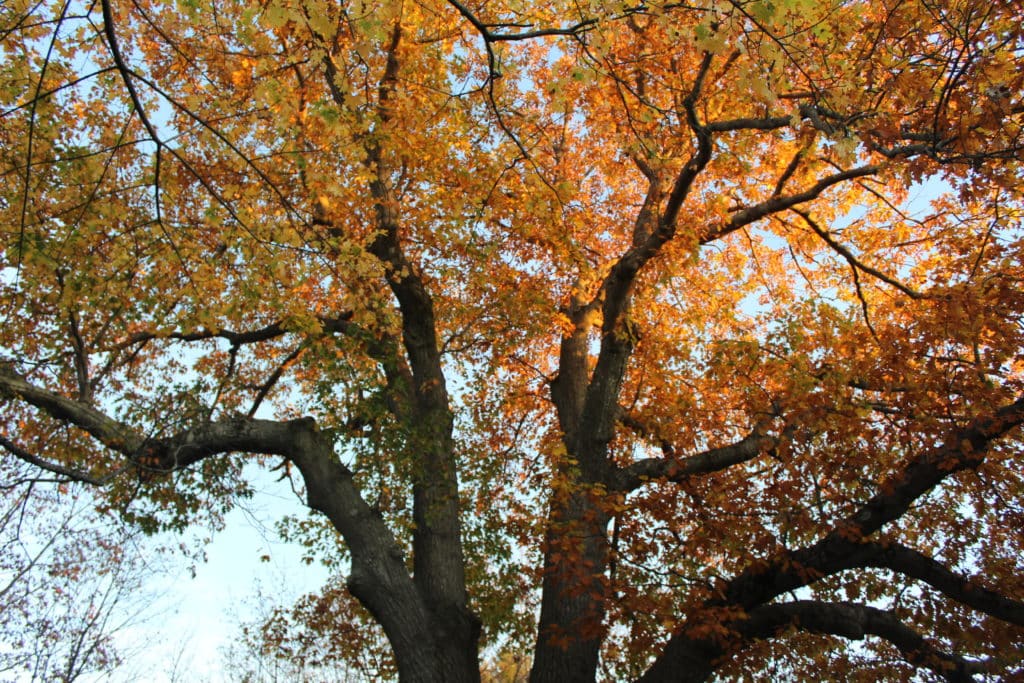
On a beautiful, sunny Friday afternoon in late October, staff members from Maine Audubon, Portland Parks, U.S. Forest Service, Maine TREE Foundation, and The Nature Conservancy gathered in Portland to visit some of Maine’s biggest trees right here in “Forest City.” While all of us on the tour consider ourselves professional and passionate conservators of whole forests, we are clearly all still suckers for the beauty, awe, and stature of singular trees, especially the “champions” we visited together.
Did you know that Maine Forest Service maintains a list and registry of our largest trees by species? Trees throughout our state get nominated by professionals and members of the public, and the Forest Service conducts official measurements of the height, trunk circumference, and crown spread. These three measurements combine for a point value that enables ranking individual trees by total size. There is also a national Big Trees list maintained by American Forests.
Portland has a few of the largest trees of their species in Maine. Three of them—Maine’s champion Green Ash, Pin Oak, and Siberian Elm—are practically touching one another in Deering Oaks park near the Rose Circle. The Pin Oak, regaled locally as our holiday light-bearing “candelabra tree,” is the tree with the largest crown spread of any tree on the entire Maine Big Tree Registry by far, measured at 106 feet in 2020.

We also visited Maine’s largest Metasequoia (aka Dawn Redwood) and Kousa Dogwood in yards in the Parkside neighborhood. While we were nearby, we stopped to see Maine’s second largest Tulip Poplar, where we heard from the homeowner about the heroic activism of neighbors saving the tree from a crew with chainsaws, and then purchasing the “vacant” lot on Munjoy Hill where the tree still thrives.
At the city’s western edge, we experienced forest microclimate (palpably cooler and more humid than where we parked only several steps away) as we rambled through an old growth stand of White Pine and Eastern Hemlock in the old Davis Farm lot (pictured at top of page). On the other side of the Riverside Golf Course from Davis Farm, we viewed old growth hardwood—mostly Oaks, Maples, and Ash—in Riverton Trolley Park. Given Maine’s robust logging legacy, our developed landscapes have ended up harboring much older trees than even long-conserved wildlands, and there are enough at these sites to be considered patches (what ecologists call examples of a habitat surrounded by what is decidedly not that habitat) of forest habitat.

The highlight for most of us (aside from the wonderful company of our group and a brief stop or two at local breweries along the way) was standing alongside Portland’s largest tree. Out near the turnpike overpass at the Barron Center grows a Red Oak (pictured at bottom of page) that even appears massive in historic photos taken 75 years ago. Today, the tree’s diameter at breast height (DBH, a standard measure of trunk girth foresters use) exceeded the six feet of my outstretched arms, and the crown spreads over the tree’s own courtyard and two small parking lots nearby.
Our tour concluded with a visit to the second largest Gingko tree in Maine. While I have spent many presentations and blog posts railing against exotic species like gingkos in Maine landscapes, I confess that I was enamored by this beautiful specimen in full fall glory as well as by the story of the ship captain who, some time around 1900, allegedly smuggled the tree as a sapling from China long before the global horticulture exchange and subsequent invasives species problems really got started. I will still cringe every time I see a new Gingko biloba being planted, with its zero benefits for birds and other wildlife. However, I learned that my disdain perhaps has a statute of limitations when I stood amidst the huge, beautiful tree on the corner of Ashmont and Deering Streets.
To be clear, roughly half of the tree species mentioned here are exotic, or not native to Maine. Siberian Elm, Metasequoia, and Kousa Dogwood, like Gingko, also hail from different continents, while Pin Oak and Tulip Poplar have native ranges to our West and South. While Maine Audubon doesn’t recommend planting more of these species here, we can still celebrate individual trees that have stood the tests of time and cities to become champion trees. Plus, the direct benefits of the high canopy structures for perching and nesting birds, especially downtown, would take decades or longer for native replacement trees.
Many thanks to Portland Parks and especially City Arborist Jeff Tarling for their incredible stewardship of Forest City’s trees. Thanks also to Maine Forest Service, U.S. Forest Service, Maine TREE, and The Nature Conservancy for conserving Maine’s forests, while also not losing sight of these precious individual trees that comprise them.

